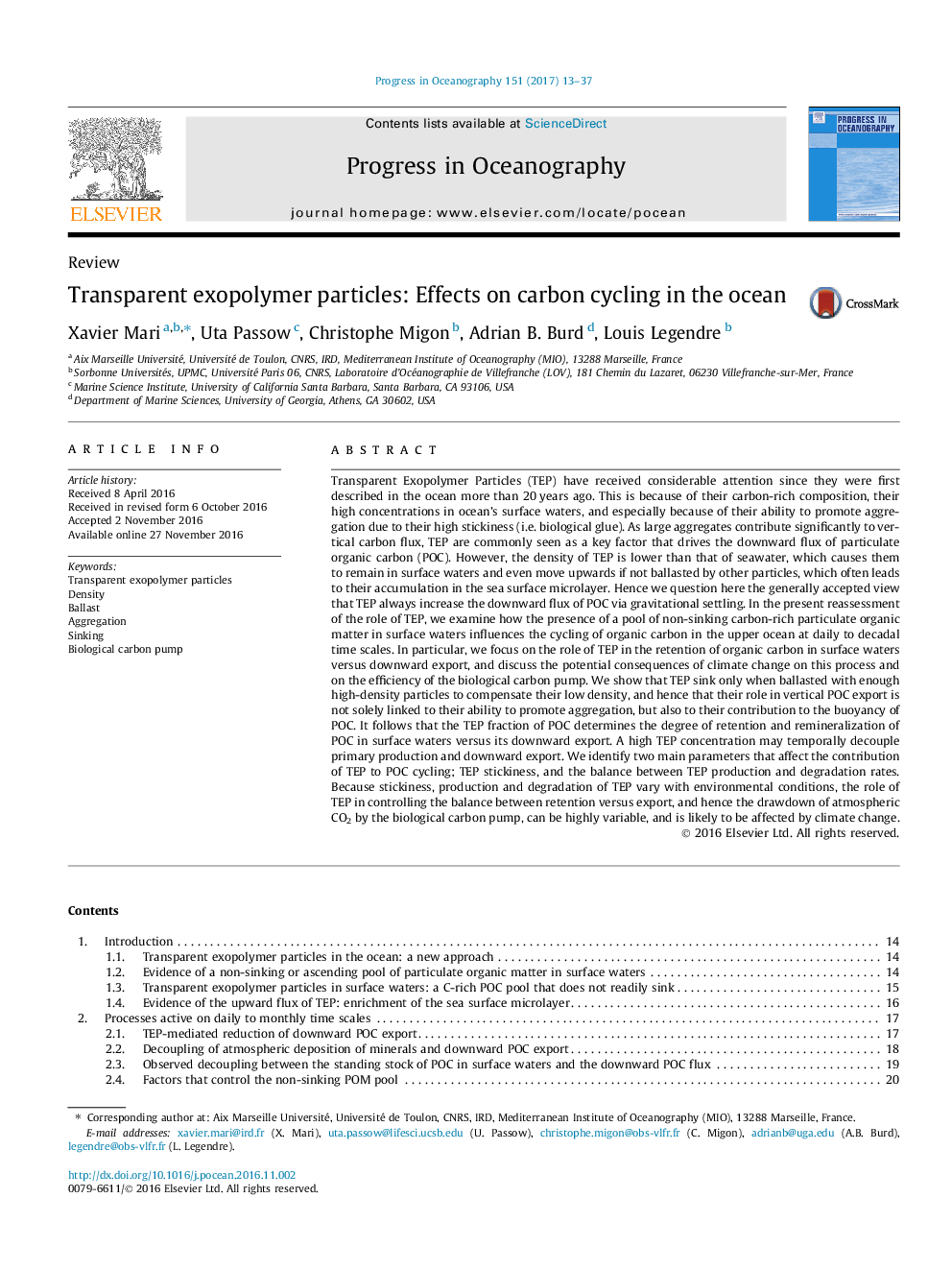| کد مقاله | کد نشریه | سال انتشار | مقاله انگلیسی | نسخه تمام متن |
|---|---|---|---|---|
| 5766513 | 1627907 | 2017 | 25 صفحه PDF | دانلود رایگان |
- Transparent exopolymer particles (TEP) accumulate in surface waters due to their low density.
- TEP sink when ballasted with high-density particles that compensate their low density.
- High relative TEP concentrations decouple primary production and downward POC export.
- The TEP fraction of POC determines POC retention and remineralization in surface waters.
- Climate change may enhance TEP production, which may decrease the biological carbon pump.
Transparent Exopolymer Particles (TEP) have received considerable attention since they were first described in the ocean more than 20 years ago. This is because of their carbon-rich composition, their high concentrations in ocean's surface waters, and especially because of their ability to promote aggregation due to their high stickiness (i.e. biological glue). As large aggregates contribute significantly to vertical carbon flux, TEP are commonly seen as a key factor that drives the downward flux of particulate organic carbon (POC). However, the density of TEP is lower than that of seawater, which causes them to remain in surface waters and even move upwards if not ballasted by other particles, which often leads to their accumulation in the sea surface microlayer. Hence we question here the generally accepted view that TEP always increase the downward flux of POC via gravitational settling. In the present reassessment of the role of TEP, we examine how the presence of a pool of non-sinking carbon-rich particulate organic matter in surface waters influences the cycling of organic carbon in the upper ocean at daily to decadal time scales. In particular, we focus on the role of TEP in the retention of organic carbon in surface waters versus downward export, and discuss the potential consequences of climate change on this process and on the efficiency of the biological carbon pump. We show that TEP sink only when ballasted with enough high-density particles to compensate their low density, and hence that their role in vertical POC export is not solely linked to their ability to promote aggregation, but also to their contribution to the buoyancy of POC. It follows that the TEP fraction of POC determines the degree of retention and remineralization of POC in surface waters versus its downward export. A high TEP concentration may temporally decouple primary production and downward export. We identify two main parameters that affect the contribution of TEP to POC cycling; TEP stickiness, and the balance between TEP production and degradation rates. Because stickiness, production and degradation of TEP vary with environmental conditions, the role of TEP in controlling the balance between retention versus export, and hence the drawdown of atmospheric CO2 by the biological carbon pump, can be highly variable, and is likely to be affected by climate change.
Journal: Progress in Oceanography - Volume 151, February 2017, Pages 13-37
